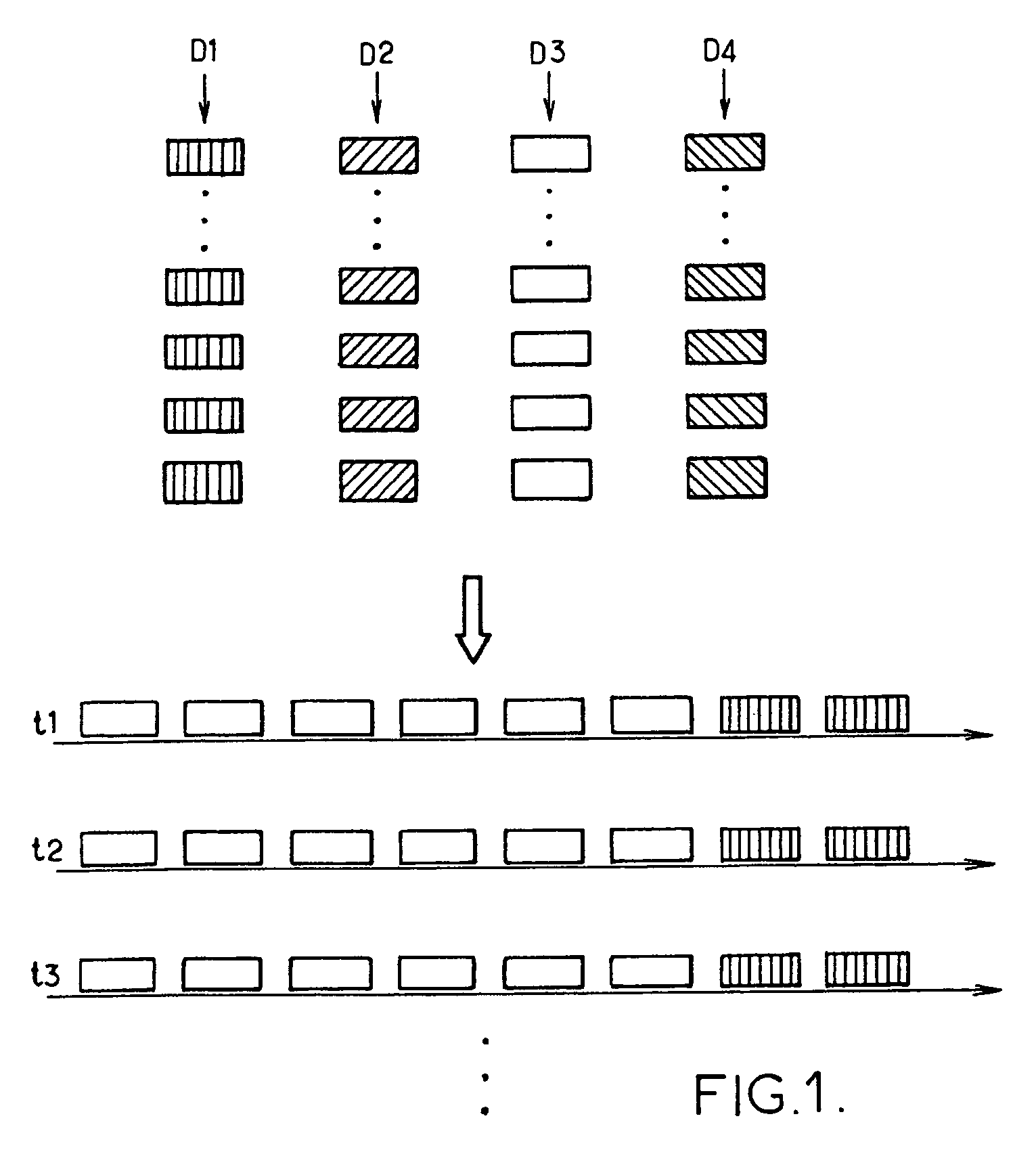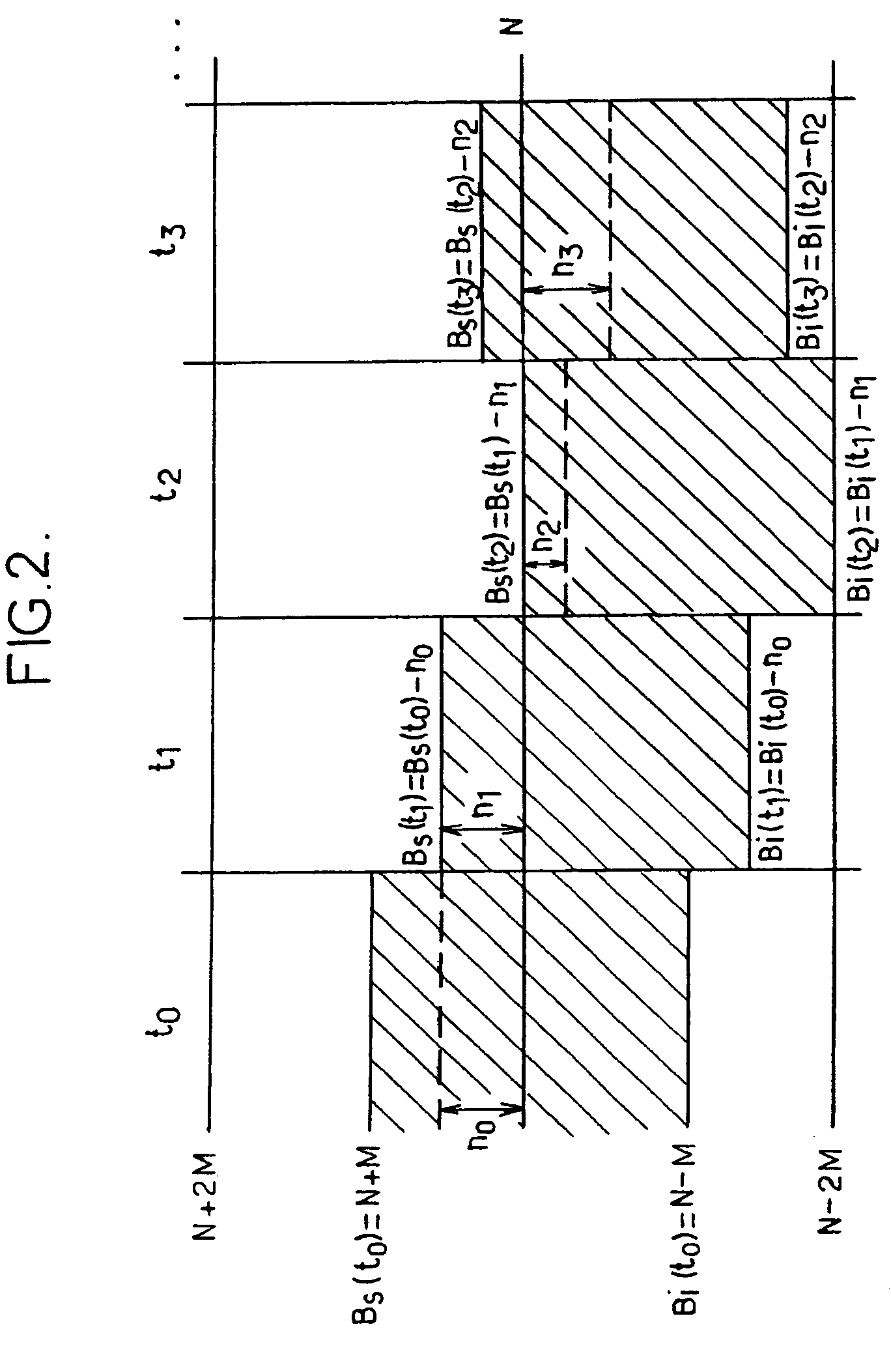Method of allocating resources in a radiocommunication system and base station for implementing the said method
a radiocommunication system and resource allocation technology, applied in the field of allocation of resources in a communication system, can solve the problems of inability to ensure a constant throughput for a user, inability to apply satisfactorily in a radiocommunication network, and inability to decode data transmitted over this link correctly when received by this user, so as to improve the effectiveness of resource allocation
- Summary
- Abstract
- Description
- Claims
- Application Information
AI Technical Summary
Benefits of technology
Problems solved by technology
Method used
Image
Examples
Embodiment Construction
[0029]The present invention finds an application in particular in radiocommunication systems comprising a set of resources to be shared between various users. It will be described hereinbelow within the context of the HSDPA (“High Speed Downlink Packet Access”) functionality, available in the UMTS (“Universal Mobile Telecommunication System”) radiocommunication system, without thereby restricting the generality of its subject matter. An overall description of the HSDPA functionality can be found in the technical specification TS 25.308, Release 5, version 5.4.0, published in March 2003 by the 3GPP.
[0030]HSDPA allows the transmission, by a base station, of data at high throughput in respect of a set of radio terminals situated in the zone of coverage of the base station. It relies on a time-sharing and code-sharing high-throughput downlink transport channel: the HS-DSCH (“High Speed-Downlink Shared Channel”). In the FDD (“Frequency Division Duplex”) mode, the characteristics of this ...
PUM
 Login to View More
Login to View More Abstract
Description
Claims
Application Information
 Login to View More
Login to View More - R&D
- Intellectual Property
- Life Sciences
- Materials
- Tech Scout
- Unparalleled Data Quality
- Higher Quality Content
- 60% Fewer Hallucinations
Browse by: Latest US Patents, China's latest patents, Technical Efficacy Thesaurus, Application Domain, Technology Topic, Popular Technical Reports.
© 2025 PatSnap. All rights reserved.Legal|Privacy policy|Modern Slavery Act Transparency Statement|Sitemap|About US| Contact US: help@patsnap.com



